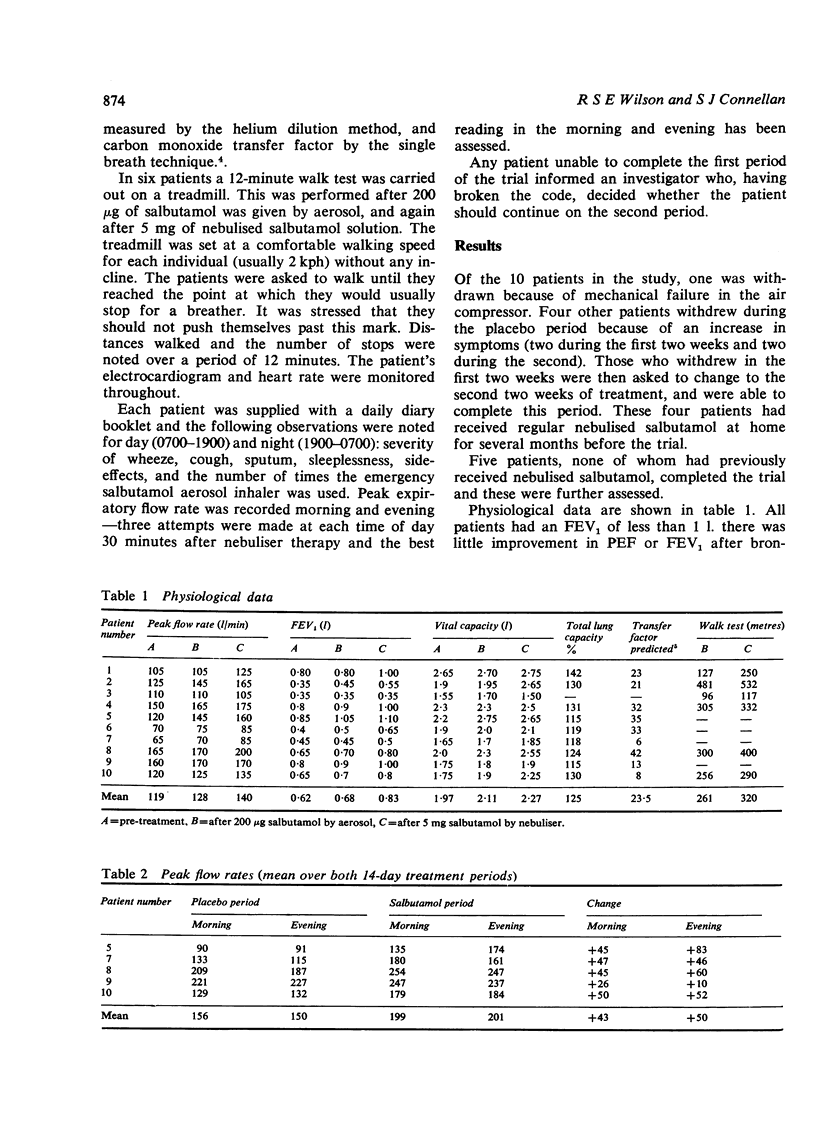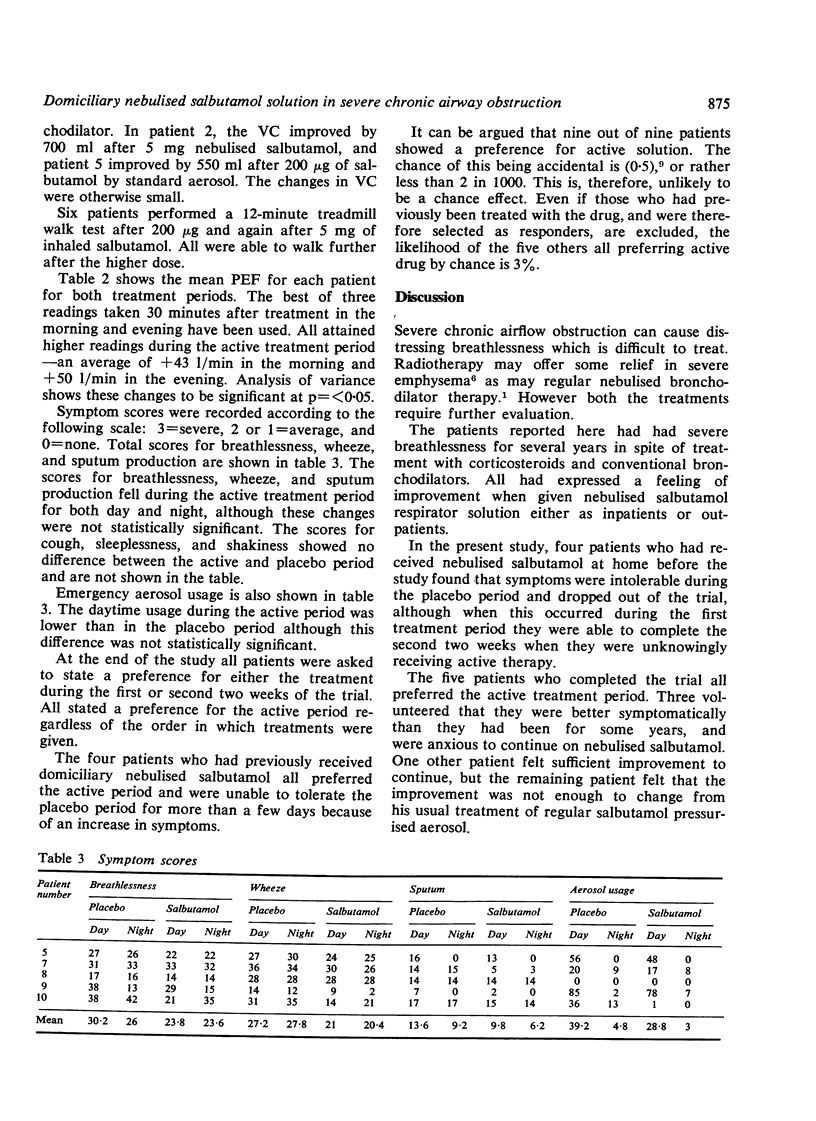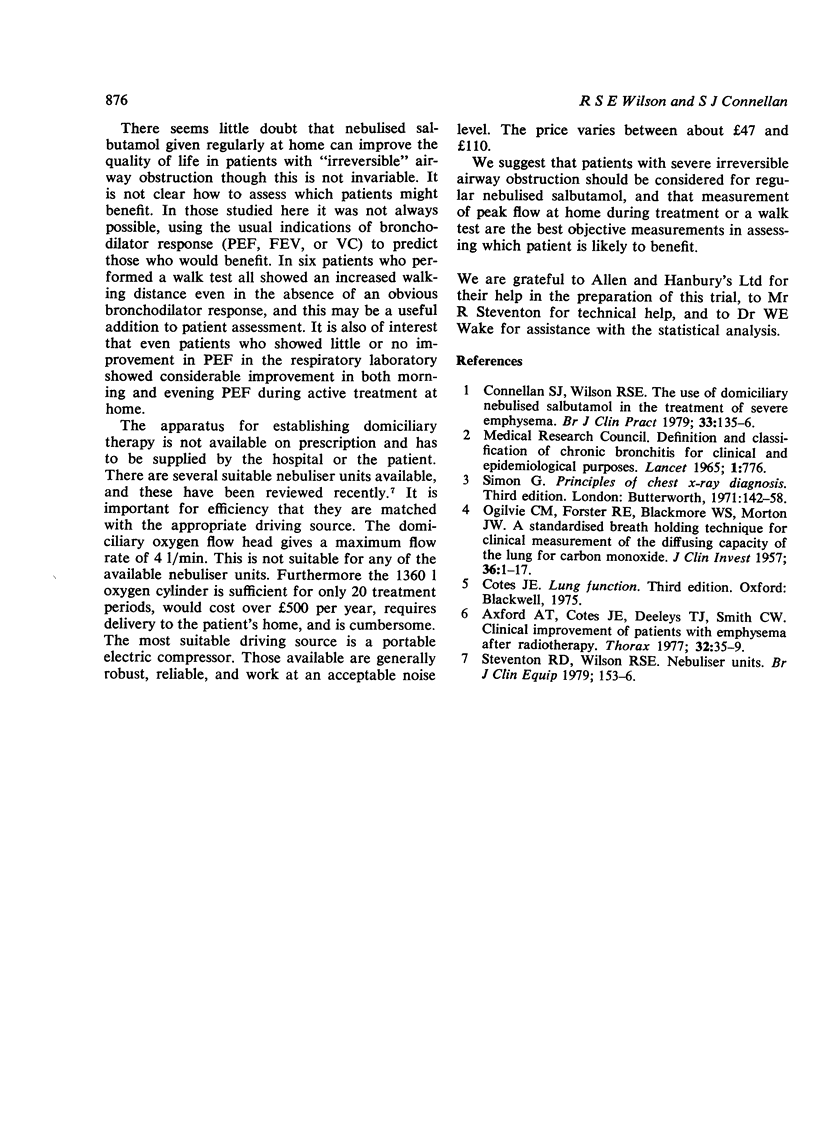Abstract
Nine patients with severe chronic airway obstruction secondary to chronic bronchitis and emphysema all preferred nebulised salbutamol solution to placebo in a double-blind controlled trial. Four of the patients who had previously received domiciliary nebulised salbutamol failed to complete the placebo period, though all completed the active period. Five others improved subjectively on active therapy, and showed a significant improvement in morning and evening peak flows. Symptom scores for breathlessness, wheezing, and sputum production were lower in the active treatment period and standard aerosol usage fell, although these changes might have been due to chance. Patients with severe chronic airway obstruction who do not respond to conventional bronchodilator therapy should be considered for this form of treatment.
Full text
PDF



Selected References
These references are in PubMed. This may not be the complete list of references from this article.
- Axford A. T., Cotes J. E., Deeley T. J., Smith C. W. Clinical improvement of patients with emphysema after radiotherapy. Thorax. 1977 Feb;32(1):35–39. doi: 10.1136/thx.32.1.35. [DOI] [PMC free article] [PubMed] [Google Scholar]
- BLAKEMORE W. S., FORSTER R. E., MORTON J. W., OGILVIE C. M. A standardized breath holding technique for the clinical measurement of the diffusing capacity of the lung for carbon monoxide. J Clin Invest. 1957 Jan;36(1 Pt 1):1–17. doi: 10.1172/JCI103402. [DOI] [PMC free article] [PubMed] [Google Scholar]
- Connellan S. J., Wilson R. S. The use of domiciliary nebulised salbutamol in the treatment of severe emphysema. Br J Clin Pract. 1979 May;33(5):135–136. [PubMed] [Google Scholar]


